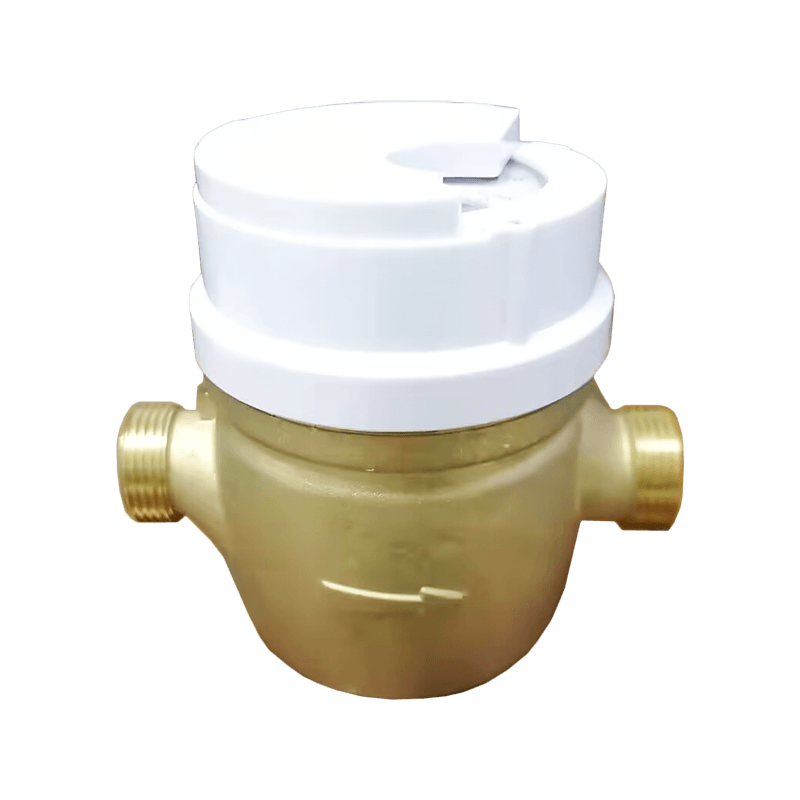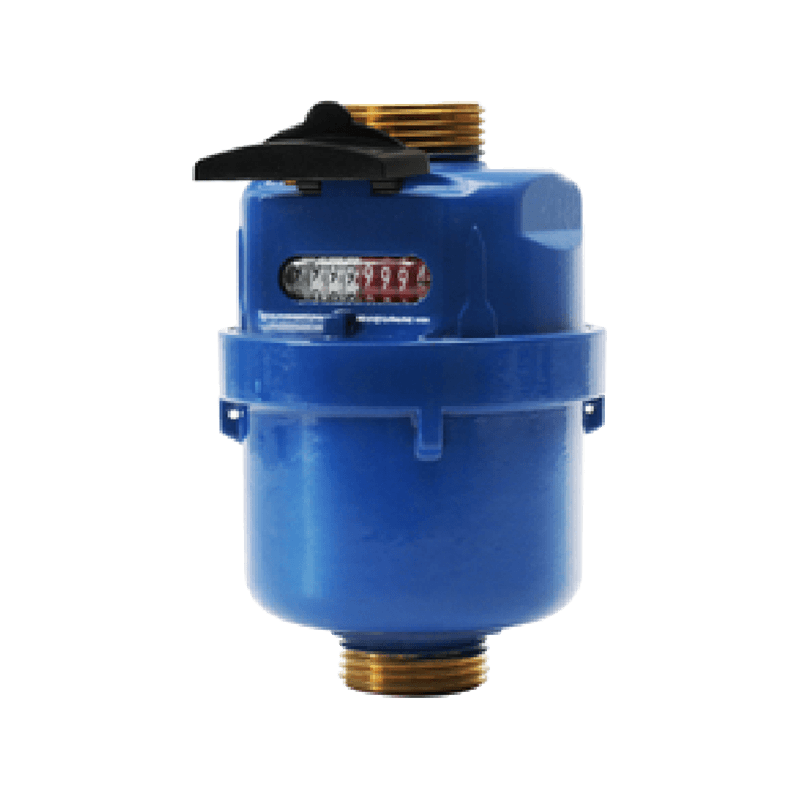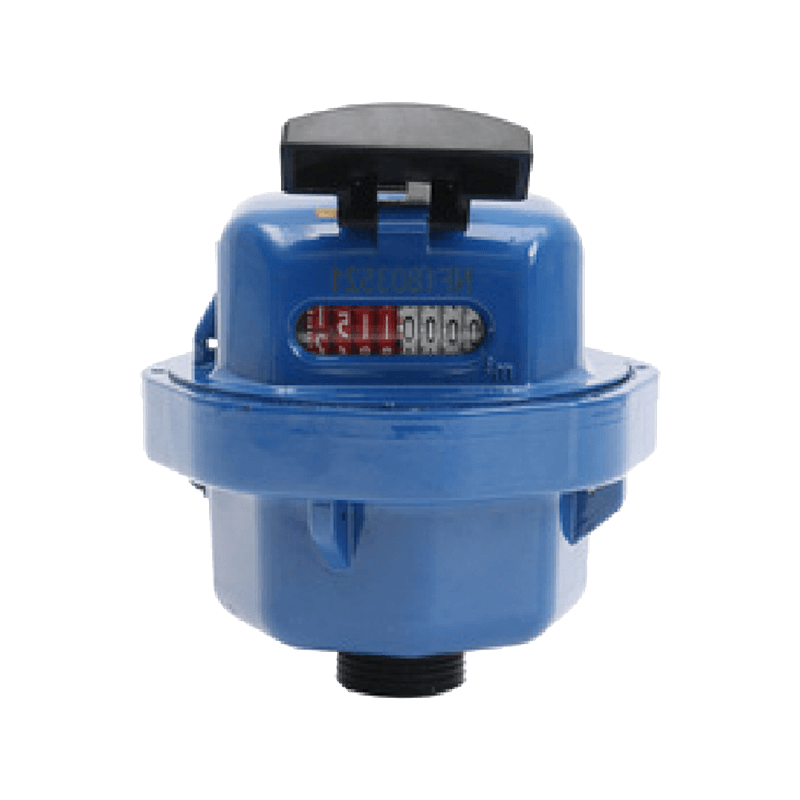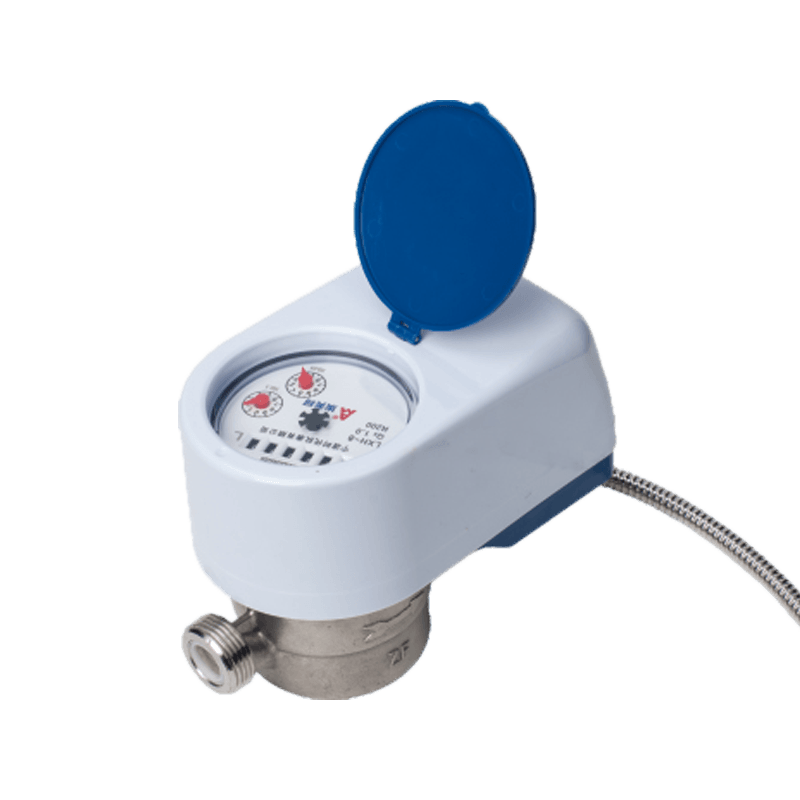Working Principle of the Ultrasonic Water Meter
1.Signal Emission: The ultrasonic transducer inside the meter converts electrical energy into high‑frequency acoustic pulses and transmits them into the water flow within the pipe.
2.Signal Reception: The same or an adjacent transducer receives the acoustic waves that have traveled through the water. When the sound propagates downstream, its speed is higher than when it propagates upstream, resulting in a measurable time difference between the two directions.
3.Time‑Difference Measurement: The meter precisely measures the time difference (time‑of‑flight method) between the downstream and upstream signals, thereby calculating the instantaneous water velocity.
4.Flow Calculation: The measured velocity is multiplied by the pipe’s cross‑sectional area to obtain the instantaneous flow rate; accumulated over time, this yields the total water consumption.
The entire process occurs electronically without any moving mechanical parts, giving the ultrasonic meter advantages such as non‑contact measurement, low pressure loss, and long service life.
What is the difference between an electromagnetic water meter and an ultrasonic water meter?
Electromagnetic Water Meter vs. Ultrasonic Water Meter
| Electromagnetic Water Meter | Ultrasonic Water Meter | |
| Measurement Principle | Based on Faraday’s law of electromagnetic induction: a conductive fluid moving through a magnetic field generates an induced voltage proportional to flow velocity. | Uses the difference in ultrasonic propagation speed (time‑of‑flight method) between downstream and upstream directions to calculate velocity. |
| Applicable Media | Only conductive liquids (e.g., tap water, wastewater). | Can measure both conductive and non‑conductive liquids; suitable for clean water, hot water, and some non‑conductive fluids. |
| Installation Requirements | Electrodes must be aligned on the same horizontal plane; the pipe must be conductive; installation direction is limited. | Transducers can be installed horizontally, vertically, or at an angle, offering greater flexibility. |
| Low‑Flow Response | Performance degrades at low flow rates (< 0.2 m/s); higher minimum measurable flow. | Very low start‑up flow (below 0.01 m/s), making it more sensitive to small‑flow conditions. |
| Sensitivity to Bubbles/Impurities | Bubbles have little effect; magnetic field is not disturbed by solid particles. | Bubbles can affect ultrasonic propagation and cause measurement errors, though solid impurities have minimal impact. |
| Pressure Loss | Essentially zero pressure drop (no flow‑restricting components). | Also zero pressure drop, as there are no mechanical obstructions. |
| Maintenance Cost | Simple structure, low maintenance; electrodes may need periodic inspection due to aging. | Transducers have long life and are virtually maintenance‑free; cleaning may be required if bubbles or scaling occur. |
| Service Life | Typically around 10 years, limited by electrode corrosion. | Can exceed 15 years or more because there are no moving parts. |



 English
English 中文简体
中文简体




